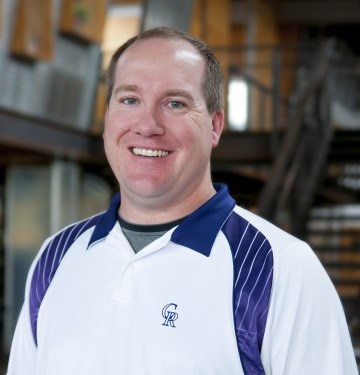On the morning of June 12, we got up around 7:30 and had breakfast at the Eco Inn from about 8:30 to 9:30 am. After breakfast, Edwin had arranged transportation for all of us to go learn about how to tell the difference between real silver and real baby alpaca and the fakes that you were likely to be sold on the street.
We left the hotel around 9:30 and headed up into the hills above Cusco to Andean Magic Art Jewelry. There we learned how they make all of the silver jewelry from melting the pure silver to create the 95% silver alloy to polishing and shaping all of the various shells and stones that were used in the silver. While we were there, we bought a turquoise turtle pendant for Grandma Ideker, an Andean cross pendant and earrings for Andrea, and a set of earrings for Diana.
We then headed up further to La Vicuñita for our lesson in alpaca. At La Vicuñita, we learned how to tell the difference between the brushed acrylic that was sold as baby alpaca, partial alpaca blends, and true baby alpaca. We also had plenty of time to shop around. We got a few baby alpaca items and we also got a couple of the hand-woven baby blankets that the women in Peru used to carry around their babies. A couple of the people at the shop demonstrated how they worked so that we can use them whenever we have a kid.
After the alpaca store, we headed back into town and had a little bit of free time for lunch before the guided city tour. We hiked up the street near the Plaza de Armas and had pizza at Trattoria Adriano. The Peruvian pizza is pretty similar to that here in the United States based on the examples that we tried.
We then hustled back down to the hotel, stopping briefly for gelato on the way. Peruvian gelato is very similar to Italian gelato, but it does have a number of unique, local fruit flavors. Some of the more interesting flavors that I tried were lucuma, sauco (an Andean berry similar to a blueberry), and maíz cuzqueño (Cuzqueñan corn). The sauco and maíz cuzqueño combination was my favorite of the trip.
Right as we reached the hotel, we got back on the busses for our city tour at 2 pm. The first stop on our tour was the Inca Q’enqo site in the hills outside of Cusco. Q’enqo was an Inca religious site that contained an ampitheater and a number of altars.
After leaving Q’enqo, we went over to the ruins of Sacsayhuaman. These ruins are probably the most important in the Inca culture. In Inca times, the city of Cusco was built in the shape of the puma, and Sacsayhuaman was the head of the puma. The Spanish thought Sacsayhuaman was a fortress because this is the fortress that the rebellion of Manco Inca made against the city of Cusco, however it is currently believed that this site was primarily of religious importance. Sacsayhuaman was routinely used as a quarry up until the early 1900’s, so only the largest stones remain today, including the largest used in any Inca construction at 320 tons. The stonework at Sacsayhuaman was easily the most impressive that we saw on the trip, using no mortar and having tolerances of no more than a single piece of paper between these massive stones.
Following Sacsayhuaman, we went back down into the city to tour the main Cathedral complex. The Cusco Cathedral consists of three separate but connected churches. Looking at the front, from left to right, you have La Sagrada Familia, the Cathedral, and El Triunfo. La Sagrada Familia is a small church dedicated to the Holy Family. From that church you move through a pair of large doors on the side into the main cathedral. The most impressive parts of the churches in this complex were the carved cedar altars. All of these altars were clearly built for the space they were in and took up every possible inch, even following the curve of the ceiling. From the cathedral, you move into El Triunfo, or The Triumph. El Triunfo was the first church built by the Spanish following the conquest of Cusco.
Finally, the last stop on the tour was Qoricancha (Coricancha) and the Convent of Santo Domingo. The Dominican order was the most important in Peru at the time of the conquest of the Incas, and was therefore given the most important site to build their church. Qoricancha was the Inca Sun Temple and marked the centerpoint of the Inca Empire. From Qoricancha, the empire was divided into four quadrants: Chinchasuyu (NW), Antisuyu (NE), Contisuyu (SW), and Collasuyu (SE). The Dominican’s built their convent right on top of the Inca temple, preserving most of the temple in the courtyard and topping it with their own structures.
The tour ended at 6 pm and we took the bus the short distance back to the hotel. We then hiked up through the Plaza de Armas to Kusikuy, a restaurant recommended by our guide book, arriving there around 6:40 pm. We waited a little over an hour for our food due to my order and listened to a pan pipe band in the meantime. The reason the food took so long was because I ordered the house specialty, cuy al horno or oven roasted guinea pig. Andrea had the papas rellenas which are a stuffed and fried potato and we shared a fried yucca appetizer. The guinea pig was wonderful, tasting a bit like rabbit, though it’s not necessarily for the squeamish as it is quite literally a whole roasted guinea pig.
We finally finished dinner at about 8:30 pm and then walked back down to the hotel and called it a night after a pisco sour nightcap.
